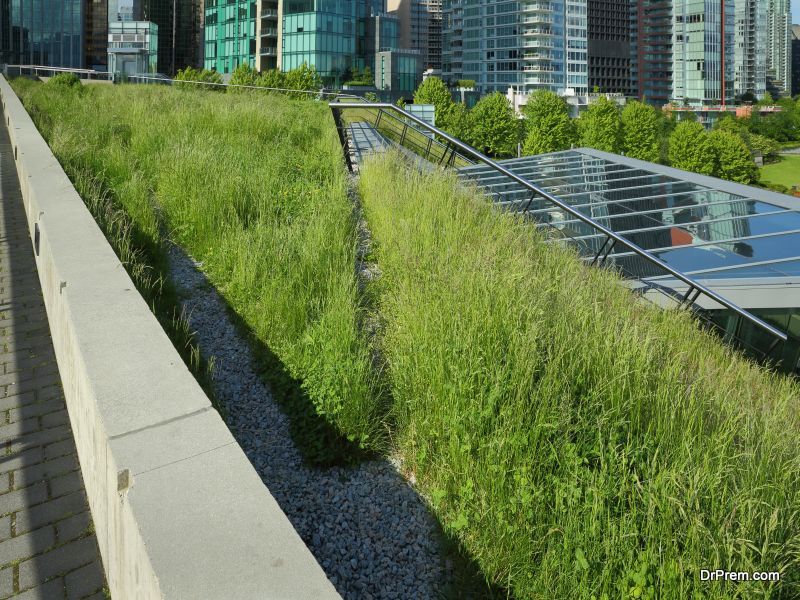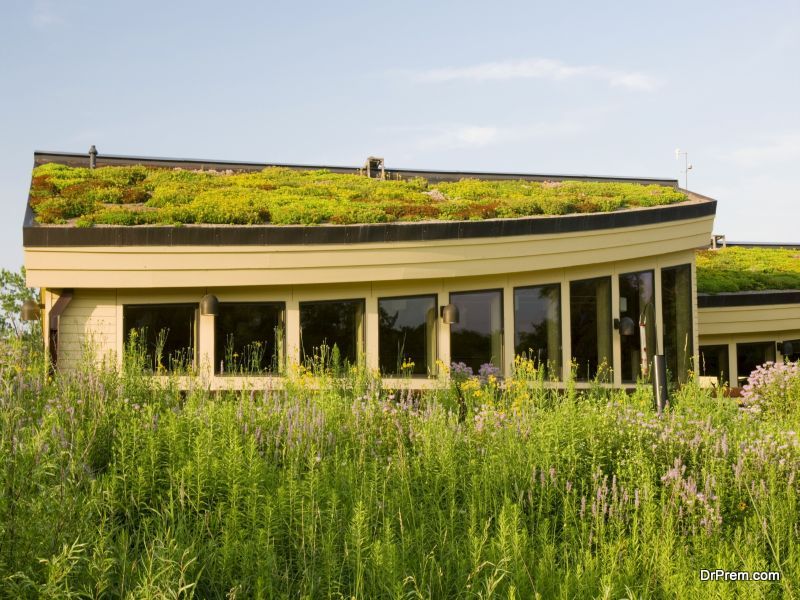Although they have been around for hundreds of years, green roofs have started becoming quite popular only now, owing to increasing awareness about environmental concerns like global warming. A green roof is a roof which hosts some kind of vegetation. In addition to harboring a growing medium for plants, a green roof contains a waterproofing layer and a root barrier along with an appropriate drainage system.
Benefits of Green Roofs
Green roofs are very easy to construct. They can be easily fitted onto the roof of any building, provided the roof is flat or sloped at an angle of 30 degrees or less.
A green roof offers several short term and long term economic benefits that clearly outweigh the costs involved in startup and maintenance. Green roofs are very long lasting as they can protect the roof membrane from UV radiation as well as harsh weather conditions. While the temperature of traditional roofs can increase to more than 32º C above air temperature, green roofs maintain an optimal temperature that either matches the air temperature or is below it. Furthermore, the greenery growing on top of the roof acts as an insulating barrier which minimizes heat gain and keeps the indoors cool irrespective of how hot it is outside.
Pre-requisites for a green roof
If you plan to install a green roof over your home or office, here are some pre-requisites you will need to consider.
Extensive or Intensive Roof Garden: This largely depends on the strength of your roof. If your roof is pretty strong, you can opt for an intensive roof garden which can grow plants with strong roots (even trees). If not, you can opt for an extensive roof garden, which will only have a thin layer of soil for plants with shallow roots.
Roof Strength: it is imperative that you call an expert to adjudge the strength of your roof as well as the maximum amount of weight it can carry before starting the roof garden. This weight should include any additional weight added to the roof in the event of rainfall or irrigation.
Protection Board: Before installing the roof garden, install a protection board to cover the normal roof. This protection board needs to have a waterproof membrane so as to prevent water seepage into the normal roof as well as the building. Usually made of ethylene propylene diene monomer which has a rubbery texture, the waterproof membrane will also act as a shield for your normal roof, preventing the roots of the plants from growing down into the building.
Other Layers: In most cases, an insulation layer is placed above the waterproof layer. This is followed by a filter layer, a water retention layer and a drainage layer. The addition of these layers ensures that the top soil in the garden remains intact instead of being washed away by the water. The growing layer made of soil and porous material is then added to the surface for the plants. If you are apprehensive of using soil, you can opt for shale or granulated clay. Fertilizers and organic compost are added above the soil and the plants are finally planted on the soil. The selection of the plants for the roof will depend on whether you want it to be an intensive roof garden or an extensive roof garden.
Maintaining a green garden
A green roof garden is maintained just like any other garden on the ground. Extensive green roofs are comparatively easier to maintain although they require regular cutting and weeding to prevent overgrowth. Intensive roof gardens need a little bit more care in maintaining so as to not disturb the shallow roots of the plants.
Summary
Green roofs are on the rise these days and can be seen atop the roofs of many homes and buildings. They are easy to grow and maintain and can have numerous benefits for the building as well as the people inside.




